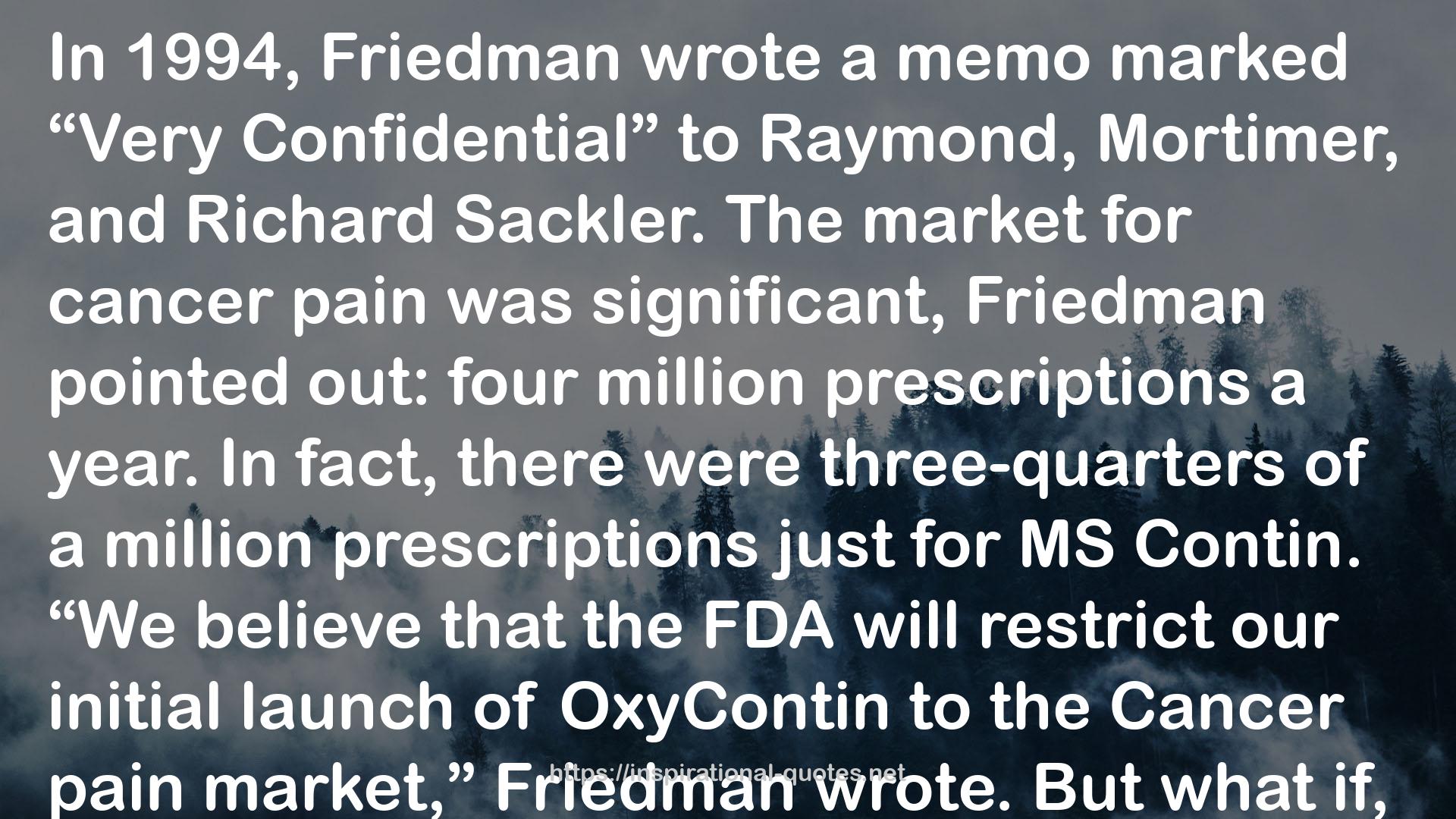" In 1994, Friedman wrote a memo marked “Very Confidential” to Raymond, Mortimer, and Richard Sackler. The market for cancer pain was significant, Friedman pointed out: four million prescriptions a year. In fact, there were three-quarters of a million prescriptions just for MS Contin. “We believe that the FDA will restrict our initial launch of OxyContin to the Cancer pain market,” Friedman wrote. But what if, over time, the drug extended beyond that? There was a much greater market for other types of pain: back pain, neck pain, arthritis, fibromyalgia. According to the wrestler turned pain doctor John Bonica, one in three Americans was suffering from untreated chronic pain. If that was even somewhat true, it represented an enormous untapped market. What if you could figure out a way to market this new drug, OxyContin, to all those patients? The plan would have to remain secret for the time being, but in his memo to the Sacklers, Friedman confirmed that the intention was “to expand the use of OxyContin beyond Cancer patients to chronic non-malignant pain.” This was a hugely audacious scheme. In the 1940s, Arthur Sackler had watched the introduction of Thorazine. It was a “major” tranquilizer that worked wonders on patients who were psychotic. But the way the Sackler family made its first great fortune was with Arthur’s involvement in marketing the “minor” tranquilizers Librium and Valium. Thorazine was perceived as a heavy-duty solution for a heavy-duty problem, but the market for the drug was naturally limited to people suffering from severe enough conditions to warrant a major tranquilizer. The beauty of the minor tranquilizers was that they were for everyone. The reason those drugs were such a success was that they were pills that you could pop to relieve an extraordinary range of common psychological and emotional ailments. Now Arthur’s brothers and his nephew Richard would make the same pivot with a painkiller: they had enjoyed great success with MS Contin, but it was perceived as a heavy-duty drug for cancer. And cancer was a limited market. If you could figure out a way to market OxyContin not just for cancer but for any sort of pain, the profits would be astronomical. It was “imperative,” Friedman told the Sacklers, “that we establish a literature” to support this kind of positioning. They would suggest OxyContin for “the broadest range of use.” Still, they faced one significant hurdle. Oxycodone is roughly twice as potent as morphine, and as a consequence OxyContin would be a much stronger drug than MS Contin. American doctors still tended to take great care in administering strong opioids because of long-established concerns about the addictiveness of these drugs. For years, proponents of MS Contin had argued that in an end-of-life situation, when someone is in a mortal fight with cancer, it was a bit silly to worry about the patient’s getting hooked on morphine. But if Purdue wanted to market a powerful opioid like OxyContin for less acute, more persistent types of pain, one challenge would be the perception, among physicians, that opioids could be very addictive. If OxyContin was going to achieve its full commercial potential, the Sacklers and Purdue would have to undo that perception. "
― Patrick Radden Keefe , Empire of Pain: The Secret History of the Sackler Dynasty
